In the small, spacious house of Mr. Mua A Giang, in Nam Chim 1 village, Si Pa Phin commune, we heard the story of the H'Mong people in H'Mong village choosing to dig ponds to raise fish for economic purposes with other special details. In a gentle voice, Mr. Mua A Giang quietly told: for many years struggling to find a way to develop the economy instead of just relying on rice and corn on the fields, but in a place "halfway up the mountain", I honestly did not know how to do it differently.
Then, in 2017, the Commune Farmers' Association organized a tour for farmers to learn about economic practices in other districts, and I signed up to participate. On that trip, I visited a fish farming model in a pond in Dien Bien district.
After returning from the trip, I discussed with my wife and children about borrowing 100 million VND from the policy bank to hire an excavator to dig a pond to raise fish. "When my wife and children first heard about raising fish, they were shocked because up until now, no H'Mong people in our commune had raised fish. Even going to the stream to catch fish and shrimp was much more difficult for the H'Mong than for the Thai people," Mr. Giang recalled.
Waiting for his wife and children to calm down, Mr. Giang carefully chose his words to persuade them. They eventually agreed to let him borrow money from the bank to rent an excavator to dig a pond around the house to raise fish. In the first batch, he released 4,000 monosex tilapia and 2,000 grass carp, but due to lack of experience and not knowing how to detect diseases in fish, many of them got sick and grew slowly.
To overcome difficulties and prevent fish diseases, Mr. Giang went to the commune to ask the officials and was instructed on how to change the water in the pond when the seasons change; the commune officials also gave Mr. Giang a stack of newspapers and told him to "read the section on teaching farmers to raise fish to gain more knowledge".
Bringing the newspaper home, Mr. Giang read and memorized the lessons on fish farming, how to raise tilapia, grass carp... Applying the methods, with the second batch of fish, Mr. Giang earned a profit of nearly 100 million VND.
With knowledge and additional capital from the profits from selling fish, in 2019, Mr. Giang invested in a farm to raise 15 buffaloes, hundreds of chickens and grow many types of trees such as cardamom, macadamia and fruit trees. Up to now, Mr. Giang's family's "pond, garden, barn" farm model has generated an average revenue of 200 million VND/year and has become an economic tourist attraction for people in the village and commune.
Following Mr. Giang's model, Si Pa Phin commune has many farmers who are bold in converting crops and proactively registering to implement agricultural production linkage models. Thanks to that, Si Pa Phin has become a key commune of the district in the movement of converting crop and livestock structure with hundreds of hectares of clean vegetables and passion fruit granted exclusive trademarks bearing the brand of the land. These include "Si Pa Phin clean vegetables", "Si Pa Phin passion fruit"...
 |
With the model of growing passion fruit in association, it has helped dozens of families in Si Pa Phin commune, Nam Po district escape poverty and rise up... (Photo: THANH DAT) |
Just like that, the economic way of Mr. Giang's family and hundreds of farming families of the H'Mong and Thai ethnic groups in Si Pa Phin have risen. Over time, each year, Nam Po has hundreds of families in the communes of Cha Nua, Na Co Sa, Na Hy, Nam Tin, which have become typical examples in economic development, contributing to the movement of building new rural areas in the locality. Talking about the movement of building new rural areas suddenly reminds me of Na Su village - a village of the Thai ethnic group in Cha Nua commune, which has pioneered in developing community tourism.
Mr. Lo Van Quy, Vice Chairman of the People's Committee of Cha Nua commune and also one of the five families in Na Su pioneering community tourism, told us: with the support of villagers, officials and people in the district, after only nearly a month of implementation (including the time to develop the idea of community tourism), at the end of 2023, Na Su officially welcomed guests.
Although there were many surprises at first and some people had different opinions, now 100% of the people in Na Su village are happy whenever they hear that there are visitors coming to visit and experience. There is no longer any distinction between this family's business or that group's business, whenever they hear the village chief read on the loudspeaker "what day will we welcome the group", every house in the village sends someone to help welcome the guests.
“Na Su village has more than 600 people, but on average, it welcomes about 500 tourists each month with an average accommodation fee of 100,000 VND/day and night, so the income for Na Su people is also significant. Not to mention that visitors also enjoy buying products grown by the people themselves on Cha Nua land” - Mr. Lo Van Quy also boasted to us.
 |
Responding to the movement of planting trees to green bare hills, every year, leaders of the District Party Committee and People's Committee of Nam Po district participate in tree planting and forestation programs with farmers. (Photo: THANH DAT) |
Telling more stories of each person, each village, each commune in the journey of striving to rise up, comrade Vang A Chinh, Deputy Secretary of Nam Po District Party Committee, Dien Bien Province - the son of the H'Mong ethnic group in Nam Chim village, Si Pa Phin commune, said with certainty: Compared to the past, the life of the people in Nam Po is much different. Without going too far, taking the time frame as the time when the district was newly established and put into operation (in 2013) compared to the present is a new page of life.
At that time (2013), according to Resolution No. 45/ND-CP dated August 25, 2012 of the Government, Nam Po was established on the basis of separating and adjusting the boundaries of 15 communes from Muong Nhe and Muong Cha districts. Nam Po has an area of 250,790 hectares; 25,517 people, including 8 ethnic groups, most of whom are ethnic minorities. The infrastructure of Nam Po at that time was almost insignificant; the roads from the district to the commune, the roads from the commune to the village were all dirt roads, trails; many villages had no electricity, no water for daily use; schools were all made temporarily from thatch, bamboo...
Yet now, after 12 years of establishment, with the solidarity and efforts of cadres and people of all ethnic groups, Nam Po has risen to become a border district with stable security and order, synchronous investment in economic and infrastructure, and effective implementation of national target programs. Also in this remote and difficult border district, Nam Po strives to rise every day by creating sustainable family and village economic models.
From a district where most people lived in temporary or dilapidated houses, Nam Po now has only 1.95% of families living in temporary houses; the average income per capita reaches nearly 22 million VND/person/year. Infrastructure has been invested in and built, the appearance of the district has changed dramatically compared to when it was first established, especially in terms of electricity, roads, schools, medical facilities, offices of agencies, units of the district and communes...
Not only achieving many achievements in economic development, Nam Po is also a typical red address of Dien Bien province in the work of Party building and political system with many movements, models and new ways of doing things effectively implemented, typically the model of 100% of villages having grassroots mass mobilization teams; the model of "volunteer Saturday", the movement "2,000 VND per day for education"... The movements and models launched by Nam Po District Party Committee have spread to all cadres, party members and the majority of people, positively affecting the implementation of the district's political tasks.
 |
Art performance to celebrate the 50th anniversary of the Liberation of the South and National Reunification Day performed by members of the Nam Khan Village Art Troupe. (Photo: SUNG DINH) |
Towards the 50th anniversary of the Liberation of the South and National Reunification Day (April 30, 2025), the 71st anniversary of the Dien Bien Phu Victory (May 7, 2025), on the evening of April 16, cadres and people of Nam Po district and Nam Khan commune organized a separate art program with the theme "The Great Spring Victory of 1975 - North and South are one, the country is united".
Although the program still includes familiar songs and simple dances, it is still enough to move the hearts of viewers, thereby arousing pride, fostering love for the homeland and country, and encouraging each child in Nam Po to continue to rise up...
Source: https://nhandan.vn/nguoi-ngheo-vung-bien-huyen-nam-po-o-dien-bien-no-luc-vuon-len-post874148.html


![[Photo] Prime Minister Pham Minh Chinh chairs conference on anti-smuggling, trade fraud, and counterfeit goods](https://vphoto.vietnam.vn/thumb/1200x675/vietnam/resource/IMAGE/2025/5/14/6cd67667e99e4248b7d4f587fd21e37c)





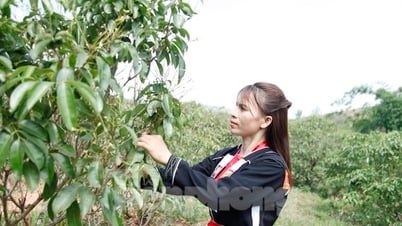

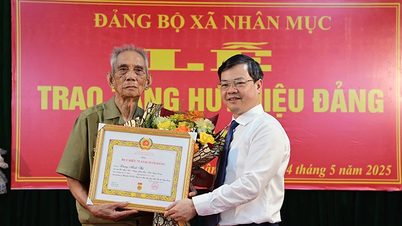
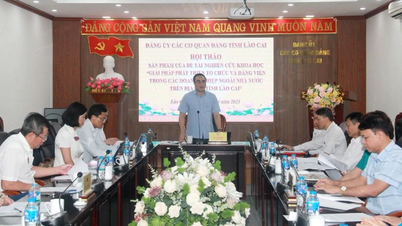
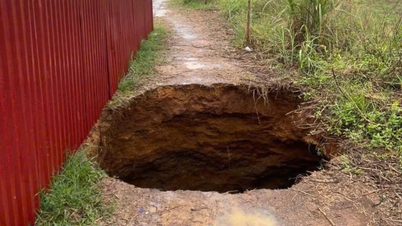
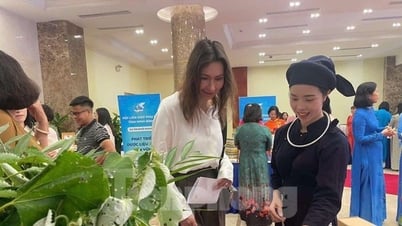
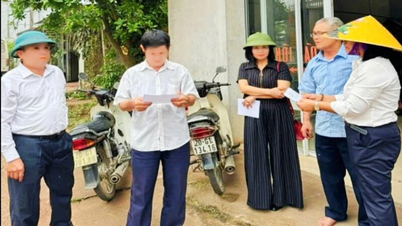




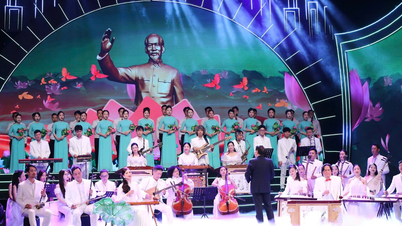
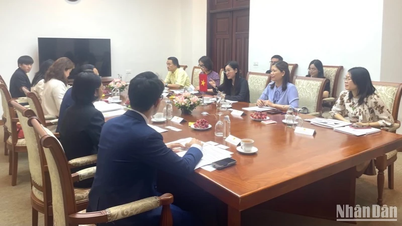

![[Photo] Exhibition "The South forever remembers His grace"](https://vphoto.vietnam.vn/thumb/402x226/vietnam/resource/IMAGE/2025/5/14/76916f6645ea47428f530edd4146f70f)
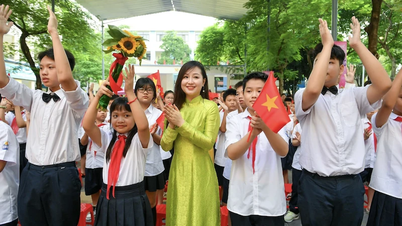



























































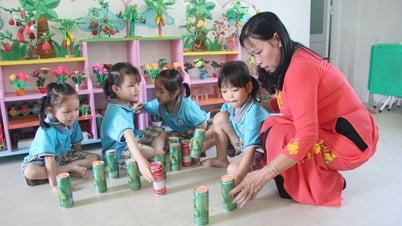









Comment (0)